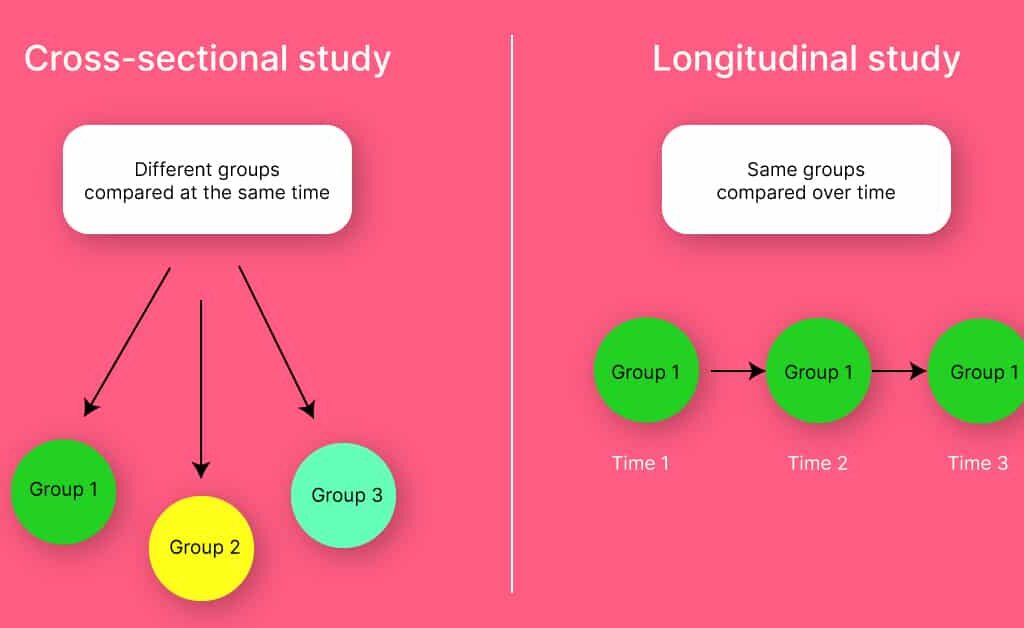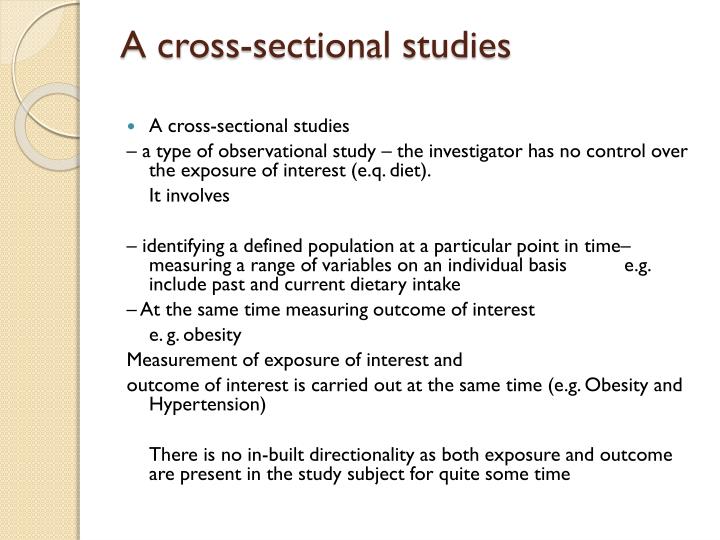Table Of Content

Asian American adults include those who self-identify as Asian, either alone or in combination with other races or Hispanic identity. Socio-demographic data that include students’ age, sex, educational level, hours of sleep at night, hours spent studying, and GPA from the previous semester. Would like to acknowledge the following individuals for their contributions towards this article. Prof Adamson Muula from KUHeS for supporting the Abstract and Manuscript writing; many thanks to the all members of the Rumphi hospital antimicrobial stewardship committee for their support in terms of data collection for PPS. In a special way we would like to thank the Commonwealth Pharmacist Association (CPA), as well as Dr Watipaso Kasambala, Ellen Mzima from Ministry of Health for supporting Point Prevalence Survey.
Methodology Series Module 3: Cross-sectional Studies
When examining the mean ratings for each of the simulation educational satisfaction subfactors, the emotional response score was the lowest in both this study and the previous study [8]. This may have been because simulation-based education caused nursing students to feel nervous, anxious, or embarrassed [9, 26, 27]. Student feelings assume a fundamental part in comprehension that relates to the securing and moving of information and clinical abilities [28].
Managing and Monitoring the Process of your cross-sectional Surveys
The sampling design of the survey was an address-based sampling (ABS) approach, supplemented by list samples, to reach a nationally representative group of respondents. Self-administered screening interviews were conducted with a total of 36,469 U.S. adults either online or by mail, resulting in 7,006 interviews with Asian American adults. After accounting for the complex sample design and loss of precision due to weighting, the margin of sampling error for these respondents is plus or minus 2.1 percentage points at the 95% level of confidence. The aim was to identify challenges and find a solution before commencement of the study.
Cross-sectional studies: Definition, benefits, and challenges
Our user-friendly platform simplifies the survey creation process, allowing you to effortlessly construct and distribute your survey to the desired target audience. With a diverse range of question, answer, and logic options, resonio ensures that your survey is tailored precisely to your research needs. This not only streamlines the process but also helps you in gaining a deeper understanding of your target audience, thereby enhancing the quality and relevance of your survey results.
Cross-Sectional Studies: Strengths, Weaknesses, and Recommendations
You then decide to design a longitudinal study to further examine this link in younger patients. Without first conducting the cross-sectional study, you would not have known to focus on younger patients in particular. A cross-sectional study is generally considered neither prospective nor retrospective because it provides a “snapshot” of a population at a single point in time. A cross-sectional study does not need to have a control group, as the population studied is not selected based on exposure. Cohort studies, on the other hand, begin by selecting a population of individuals who are already at risk for a specific disease. Both cross-sectional and longitudinal studies are observational and do not require any interference or manipulation of the study environment.
How many people should I survey? for cross-sectional surveys
For example, epidemiologists who are interested in the current prevalence of a disease in a certain subset of the population might use a cross-sectional design to gather and analyse the relevant data. Cross-sectional studies are not designed to follow individuals forward in time (prospective) or look back at historical data (retrospective), as they analyze data from a specific point in time. In these studies, researchers study one group of people who have developed a particular condition and compare them to a sample without the disease. Cross-sectional studies can be either qualitative or quantitative, depending on the type of data they collect and how they analyze it. Often, the two approaches are combined in mixed-methods research to get a more comprehensive understanding of the research problem. Unlike cross-sectional studies, researchers can use longitudinal data to detect changes in a population and, over time, establish patterns among subjects.
Develop Your Questions
Nebhinani et al. (2020) identified interface concerns and academic workload as significant stress-related factors. Notably, only an interest in nursing demonstrated a significant association with stress levels, with participants interested in nursing primarily employing adaptive coping strategies compared to non-interested students. The study revealed that simulation design, flow, and simulation educational satisfaction are positively related and that flow has a partial mediating effect on the relationship between simulation design and simulation educational satisfaction.
Does a cross-sectional study have a control group?
In that case, you might gather both demographic and opinion-related data, allowing you to conduct correlational analysis across these variables. You might find that as respondents’ concern for their health increases, the amount of time spent vaping decreases. This is useful information, but it tells you nothing about the direction of causality. In other words, you will not be able to tell from a cross-sectional research study whether being more concerned about your health reduces the amount of time spent vaping, or whether in fact, people who vape less become healthier. In contrast, cross-sectional studies collect data at just one point in time, allowing for quicker access to research findings once data collection is complete.
Frequently Asked Questions (FAQ)

Still, they use longitudinal studies, due to their nature, to dissect the research from the cross-sectional studies for further research. Check out some of the critical advantages of conducting online research using cross-sectional studies and see if it’s a good fit for your needs. This study type is also known as cross-sectional analysis, transverse study, or prevalence study. Although this research does not involve conducting experiments, researchers often use it to understand outcomes in the physical and social sciences and many business industries. For example, suppose you’re interested in how respondent age or gender affects their opinions about vaping and health.
This makes cross-sectional studies particularly valuable for research projects that are under tight time constraints, have limited budgets, or where insights are needed quickly. Cross-sectional research design can be used to assess the attitudes, interests, or behaviors of a study sample. Because of this, cross-sectional studies are particularly useful in informing resource planning and allocation. For example, the owner of a smoothie shop might use a quick survey at the point of sale to learn which types of fruits and vegetables customers prefer.
The second step in the weighting process was adjusting the base weight to account for occupied households among those with unknown eligibility (category 4). Previous ABS studies have found that about 13% of all addresses in the ABS frame were either vacant or not home to anyone in the civilian, non-institutionalized adult population. For this survey, it was assumed that 87% of all sampled addresses from the ABS frame were eligible households. However, this value was not appropriate for the addresses sampled from the list frames, which were expected to have a higher proportion of households as these were maintained lists.
Future studies or health policies can target methods to prevent or treat outcomes (i.e., disease, condition) identified in such studies. The conduct of research requires the selection of the appropriate method to evaluate the research problem or question. Due to some topics’ ethical nature or the need to understand the natural history (i.e., disease or condition), using an observational study design might be the best fit.
A cross sectional survey on the effect of COVID-19 related restrictions on undergraduate and postgraduate medical ... - BMC Medical Education
A cross sectional survey on the effect of COVID-19 related restrictions on undergraduate and postgraduate medical ....
Posted: Tue, 29 Mar 2022 07:00:00 GMT [source]
Lastly we would like to thank the Director of Health and Social Services for Rumphi District Hospital, Dr Westain Nyirenda for granting authorization to conduct the study at the facility. In our study, we further observed less commonly used vancomycin and chloramphenicol antibiotic performing much better against some resistant bacterial strains. This is in an agreement with other studies that found chloramphenicol maintaining its efficacy against eye infections compared to tetracyclines and floroquinolones [28].

Although cross-sectional surveys don’t involve conducting experiments, researchers often use one to understand outcomes in a variety of industries, selecting participants based on particular variables of interest. Therefore, to maximize the effectiveness of simulation-based education, instructors should develop strategies to increase flow in simulation situations to elicit learners’ flow experiences [15, 20]. In recent years, many studies on simulation education in Korea have identified learning outcomes and defining factors after training [5,6,7, 9, 12, 20]. However, there is a lack of research on the role of flow in learning design and simulation educational satisfaction. In terms of learning approach, most students (55.0%) exhibited a moderate level of deep learning approach, followed by 25.9% with a high level and 19.1% with a low level.
Approximately 8.5 weeks after the initial mailing, Westat sent nonrespondents a paper version screening survey, which was a four-page booklet (one folded 11×17 paper) and a postage-paid return envelope in addition to the cover letter. If no response was obtained from those four mailings, no further contact was made. Considering changing behavior is crucial, we propose further qualitative and behavioral studies in-order to further explore barriers and facilitators relating to healthcare workers capability, opportunity and motivation to change.
For instance, at the time of this study, the latest treatment guideline in Malawi was published in 2015. A cross-sectional study provides valuable insights into a population’s characteristics, attitudes, and behaviors at a single point in time. As with any research design, cross-sectional studies should be used with other research methods to provide a complete study. Overall, cross-sectional studies can be a valuable tool for researchers looking to understand a population quickly.

No comments:
Post a Comment